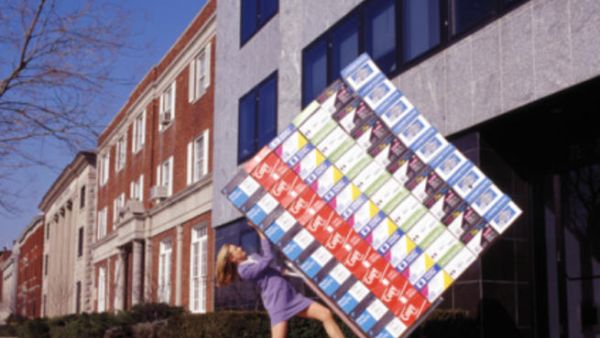The world's 250 largest retailers recorded sales growth in excess of five percent (between June 2010 and June 2011), according to the '2012 Global Powers of Retailing' report from Deloitte, in conjunction with Stores Media. The strongest growth in fiscal year 2010 was generated by Middle Eastern, African and Latin American retailers, with Middle Eastern and African retailers generating the highest compound annual growth rate of all regions over the 2005-2010 period.
The figures for the 250 largest retailers mark a substantial improvement, when the group recorded anaemic growth of just 1.2 percent, and were achieved despite the end of fiscal stimulus in the United States, the crisis in the eurozone, and tighter monetary policy in key emerging markets. The report also found that profitability improved, with net profit increasing to 3.8 percent in 2010, up from 3.1 percent in 2009. Nearly all of the companies that disclosed their bottomlines (183 of 195) operated at a profit in 2010, and more than two-thirds of the reporting companies saw an improvement in their net profit margin. While this performance has been impressive, retailers will have been concerned by the deterioration in the global economy over the latter half of 2011. Dr Ira Kalish, director of Consumer Business for Deloitte Research, said: "The global economy is decelerating, with growth in 2012 likely to be slower than in 2011 in many of the world's leading markets. The eurozone crisis continues to drain investor and consumer confidence, while growth in the US next year is unlikely to significantly reduce unemployment. China and the other Bric (Brazil, Russia, India and Chiba) economies are slowing as a result of tighter fiscal policy and weaker global growth, and while Japan is expected to grow strongly next year, this is only because 2011 was so poor following the devastating earthquake and tsunami." Commodity prices However, retailers may find some silver linings in this otherwise cloudy environment.
One positive effect of slower global growth will be the continued dampening of commodity prices. For retailers, this means some improvement on the cost side of the ledger while retail price inflation in some economies presents an opportunity for improved profit margins, even in the context of slow top-line growth. "The most significant silver lining is the long term. Even though the economic environment in 2012 will be difficult, the long-term outlook for the global economy remains good.
Despite demographic and structural headwinds, China will continue to grow while other emerging markets such as India, Brazil, Turkey, Indonesia, and parts of South America, sub-Saharan Africa and the Middle East offer the possibility of stronger growth as well as new opportunities for the world's leading retailers," he added. Other key findings include aggregate sales of the top 250 reached $3.94 trillion; the share of total top 250 retail sales accounted for by the top 10 retailers slipped again in 2010 to 29.4 percent, down from 30 percent in 2009 and a high of 30.2 percent in 2008; the proportion of sales generated from foreign operations increased to 23.4 percent in 2010, up from 22.2 percent in 2009 and higher than the previous peak of 22.9 percent in 2008; and the pace of globalisation increased last year, with 88 new market entries made by 40 retailers across 57 countries.
Across channels Though physical openings in new countries increased this year, another popular method for retailers to use to test new markets was to establish an online presence. Most retailers operate across multiple channels (example stores, catalogues, online, call centres, social networking, digital displays and mobile), but few understand how consumers are using and shopping across each of these channels and even fewer have a seamless, consistent, and comprehensive multichannel strategy. "As consumers become savvier, they are increasingly taking charge of their shopping experience, identifying and exploiting many different sources of information and channels to optimise the different elements of their shopping journey.
Since customers do not distinguish between channels, retailers will have to support seamless integration among all their channels such as access to their full range of products, customer information, and order information. In less than a few years, it is likely that consumers will expect to use a mobile device to get real-time inventory information about the closest stores or to order a product while in a store and have it delivered at home. In 2012, retailers will need to continue developing innovative multichannel solutions," Kalish added.








